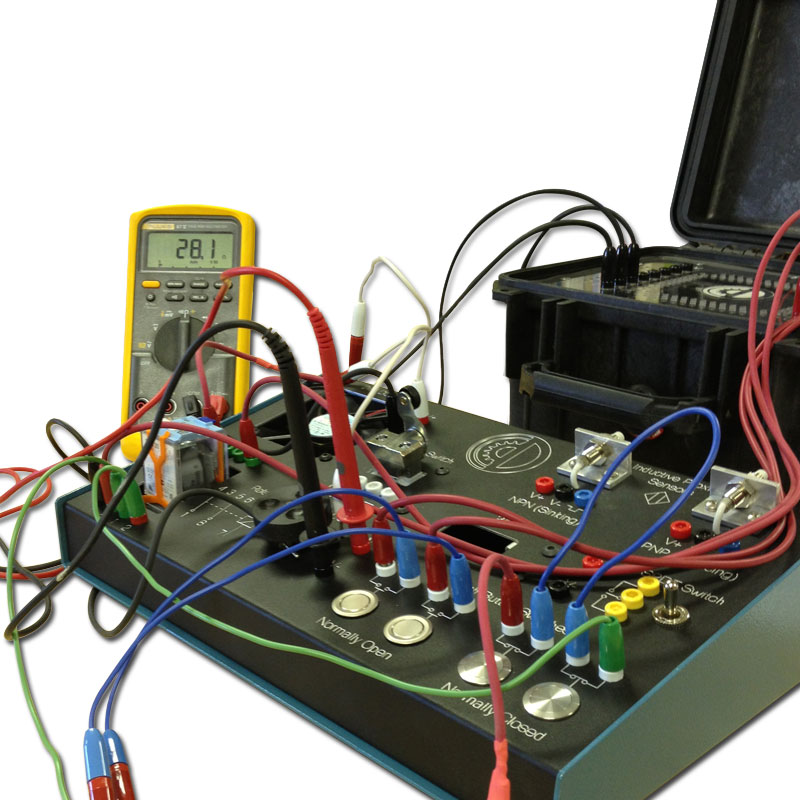Achieve total compliance through expert regulatory compliance assistance.
Achieve total compliance through expert regulatory compliance assistance.
Blog Article
Leading Tips for Effective Electric System Troubleshooting
Fixing electric systems calls for a systematic strategy, based in a comprehensive understanding of electrical principles and safety protocols. The nuances of effective fixing prolong beyond simple technical understanding; comprehending exactly how to record findings and focus on security can substantially affect results.
Understand the Fundamentals
Comprehending the fundamentals of electric systems is necessary for efficient troubleshooting, as a solid foundation allows specialists to identify and settle issues more efficiently. A comprehensive grasp of electrical concepts, such as voltage, existing, resistance, and power, is important in determining the root causes of problems. Voltage is the electric possible distinction that drives present through a circuit, while resistance opposes the circulation of existing, affecting the overall capability of the system.
Knowledge with circuit elements, consisting of resistors, capacitors, diodes, and changes, is additionally vital. Each component plays an unique duty in circuit habits and can influence performance when malfunctioning. In addition, comprehending collection and parallel circuit setups is vital, as these plans affect the distribution of voltage and present within the system.
Moreover, understanding of safety and security protocols is indispensable. Specialists must understand possible risks, such as shock and brief circuits, to apply safe troubleshooting techniques. By mastering these foundational principles, technicians improve their capability to carry out reliable diagnostics and fixings, eventually leading to enhanced performance and reliability of electrical systems. This fundamental understanding is the keystone of successful troubleshooting ventures.
Gather Necessary Tools
Efficient troubleshooting of electric systems requires the right collection of tools to detect and solve problems accurately. Crucial devices include a multimeter, which gauges voltage, present, and resistance, allowing for exact assessments of electric elements.
Additionally, shielded hand tools such as screwdrivers, pliers, and cord strippers are crucial for securely manipulating electric connections. It is likewise advisable to have a circuit tester accessible to confirm the visibility of voltage in outlets and cords. For more facility systems, a thermal imaging video camera can aid spot overheating parts, indicating possible failures.

Comply With a Methodical Technique
Having actually collected the proper tools, the next action in fixing electrical systems is to comply with a methodical method. A methodical technique guarantees that service technicians can determine faults effectively and accurately, reducing downtime and avoiding unnecessary repairs.
Begin by examining the system's schematic representations and specifications. This entails monitoring each component methodically, starting from the power source and functioning towards the lots.
Use testing tools, such as multimeters Bonuses and oscilloscopes, to gather objective information about voltage, existing, and resistance at different factors within the system. This empirical proof will assist your troubleshooting efforts and aid to verify or remove prospective reasons for failing.
Furthermore, think about ecological elements that may affect the system's performance, such as temperature level fluctuations or wetness ingress. A detailed evaluation of circuitry, connections, and parts will make sure that all possibilities are represented.
Document Your Findings
Complete documentation is crucial in the fixing process of electric systems. This practice not just help in comprehending the root reason of the problem yet also offers as a reference for future repairing efforts.

Additionally, keeping a log of components replaced or repairs executed is very useful. This info sustains stock management and can aid examine the durability and reliability of particular components.
Inevitably, the reference documentation procedure must be extensive yet concise, making it possible for simple retrieval and evaluation - electrical system troubleshooting. By prioritizing thorough paperwork, service technicians can create a beneficial understanding base that not only aids in existing troubleshooting however also equips future maintenance initiatives, thereby enhancing overall system dependability

Prioritize Precaution
Acknowledging the integral risks connected with electric systems is important for guaranteeing security throughout troubleshooting. Electrical shock, burns, and devices damages are just a few of the potential risks that professionals face. Prioritizing precaution is not only a legal commitment yet likewise an ethical important that safeguards both the professional and the surrounding environment.
Prior to starting any kind of troubleshooting task, service technicians should put on appropriate personal safety equipment (PPE), consisting of protected handwear covers, shatterproof glass, and flame-resistant apparel. Guaranteeing that the workspace is completely dry and devoid of clutter can substantially lower the risk of crashes. Furthermore, it is vital to de-energize circuits prior to starting any work, confirming that they are not live through using a multimeter or voltage tester.
Developing clear interaction procedures with employee is likewise crucial; this makes sure that everybody is conscious of prospective dangers and the condition of the electric system being serviced. Last but not least, having an emergency situation Our site feedback strategy in place can prove important in the event of an event. By prioritizing safety steps, professionals can successfully alleviate threats and promote a safer workplace.
Conclusion
Effective electric system repairing counts on an extensive understanding of basic principles and a systematic method. By gathering necessary tools, sticking to systematic evaluation methods, and meticulously recording findings, the fixing process ends up being more effective and dependable. Focusing on precaution guarantees the well-being of people involved and the stability of the electric system. Implementing these methods will improve the repairing experience, resulting in quicker resolutions and enhanced functional efficiency in electrical systems.
Report this page